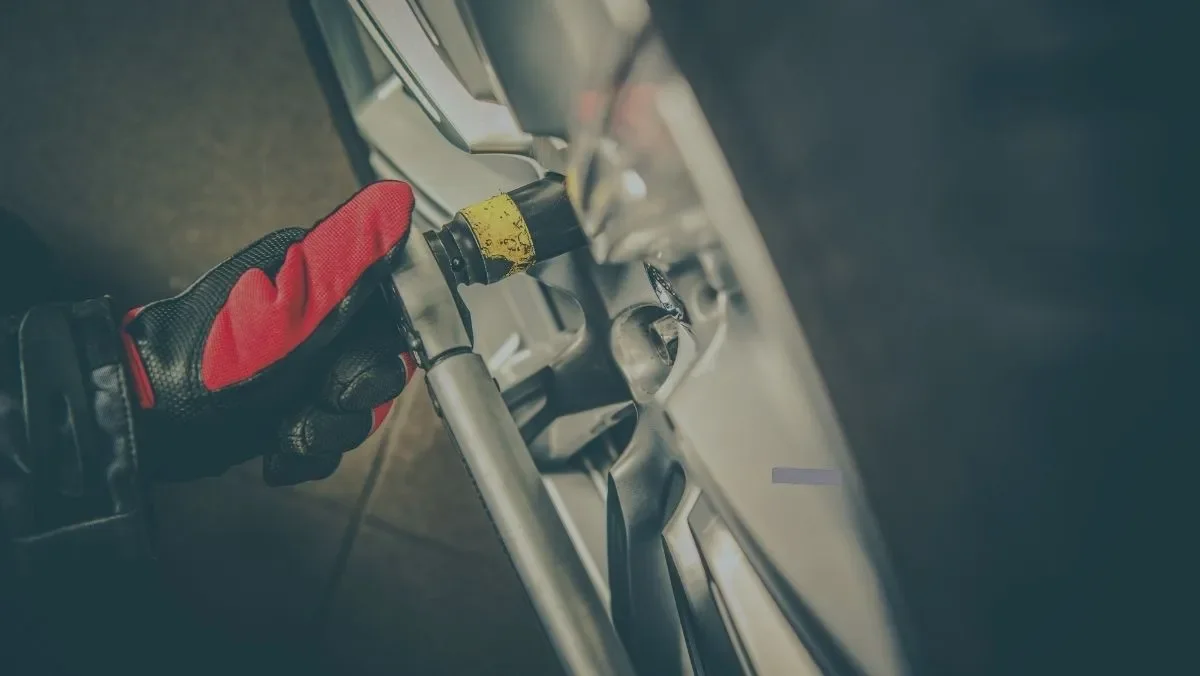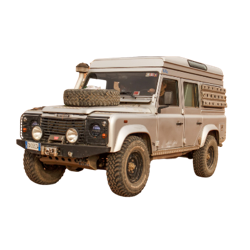If you are the owner of a vehicle, whether it be a tiny hatchback, your average sedan, a truck, or a large 4×4, tire rotation is an integral part of maintaining your vehicle in great shape. Just as an oil change can improve the performance of your vehicle’s engine, a tire rotation can and will improve the physical performance of your vehicle.
That being said, a tire rotation is especially essential when you are the proud owner of an adventurous 4×4 SUV. They can dictate the success and long-term enjoyment of your off-road adventures.
The last thing you want is to deal with a short tread life, uneven air pressure, and/or your vehicle slipping or losing balance on your great escapes.
In this article, we will highlight the importance of tire rotation for your 4×4 vehicle. We will begin by covering the basics, such as: what is tire rotation and why is it important?
From there, we will move on to providing you with tips and instructions on how to rotate tires on a 4×4 vehicle, how often you should conduct a tire rotation, as well as elaborating on the tools required for a tire rotation, how to prepare and lift your car with a car jack, before finally explaining the different tire rotation patterns.
What is Tire Rotation
So, what exactly is a tire rotation? To some, this question may seem rudimentary. But regardless, it is crucial to know and understand the basics of tire rotation when owning a 4×4 vehicle that you plan to use extensively.
Tire rotation, simply put, is when you move the tires on your vehicle from one side to another. The purpose behind this is to balance out the wear on all four of your tires, so they can wear evenly. Depending on which side and location of your vehicle they are on, in addition to whether you drive a front-wheel-drive vehicle, rear-wheel drive vehicle, or a four-wheel-drive vehicle, tires can wear down at different levels.
Front Wheel Drive Vehicles
Front-wheel drive vehicles are powered and driven through the two front wheels of your car. When you hit your gas pedal, that fuel power is sent to your front wheels, which effectively pull your vehicle forward. In this context, having uneven front tires, in terms of wear, can seriously inhibit your vehicle’s ability on the road.
These are the wheels that pull your car forward, meaning they experience the most friction, as well as the weight of your car’s engine. With this in mind, it is important to keep their tires rotated for even wear so that driving your front-wheel-drive vehicle is as smooth and safe as possible.
Rear Wheel Drive Vehicles
Rear-wheel drive vehicles are powered and driven through your vehicle’s rear wheels at the back of your car. When you hit your gas pedal, that fuel power is sent to your rear wheels, which effectively push your vehicle forward.
Just like how front-wheel drive vehicles require tire rotation for their front wheels, due to their role in pulling your car forward, the rear wheels on your rear-wheel-drive car require the same care and tire rotation, due to the excess friction they experience as they push your car forward.
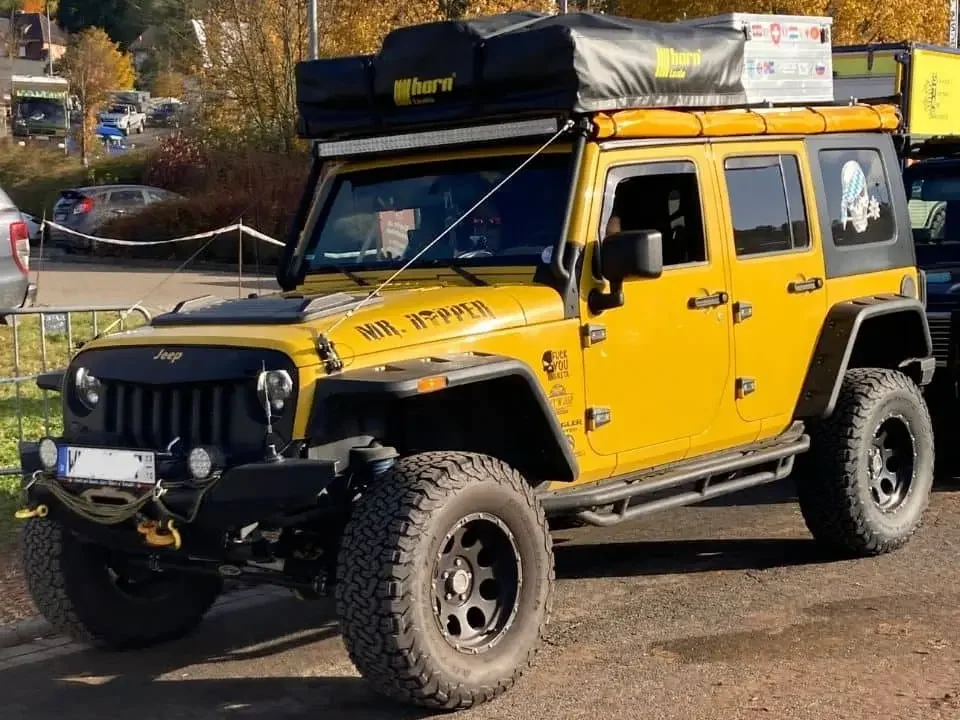
Four-Wheel-Drive Vehicles
When it comes to four-wheel-drive vehicles, the question of tire rotation increases in importance. For the front and rear-wheel drive vehicles, tire rotation is definitely important, but the emphasis lies with the tires that coat the two wheels that power and push/pull your car.
With four-wheel-drive vehicles, all four wheels are in motion when your foot hits the gas pedal, and play an equal role in powering your car forward.
This means it is especially important to ensure that tire rotation of all the tires on your four-wheel drive vehicle is a regular part of your vehicle’s maintenance, considering that all four wheels play a crucial role in powering your car through all types of road conditions and terrain.
How do you rotate your tires?
As you now have learned, tire rotation is extremely important for all vehicles, to maintain even wear and balanced tires for a smooth and safe driving experience. Now that we have discussed why tire rotation is important, our next question is: how do you rotate your tires?
To answer this question, we will break down the following three steps: the tools required to rotate your tires, the tire rotation patterns you should have an understanding of, and how often you should be rotating your tires.
Tools for Tire Rotation
When rotating the tires on your four-wheel drive vehicle, it is crucial you use the proper tools and procedures for tire rotation, to ensure maximum safety for yourself and your vehicle.
Wrenches
The first of the tools you will need is a wrench, also referred to as a Lug Wrench or Tire Iron. These are wrenches used to attach and remove the nuts that lock your wheel onto your vehicle. The nuts are referred to as ‘lug nuts’.
Lug wrenches come in L or X-shaped designs, with different-sized sockets for compatibility with different-sized lug nuts, as wheels and their parts vary in size from vehicle to vehicle. The L and X-shaped builds for lug wrenches, provide the user with different methods of holding and operating the wrench.
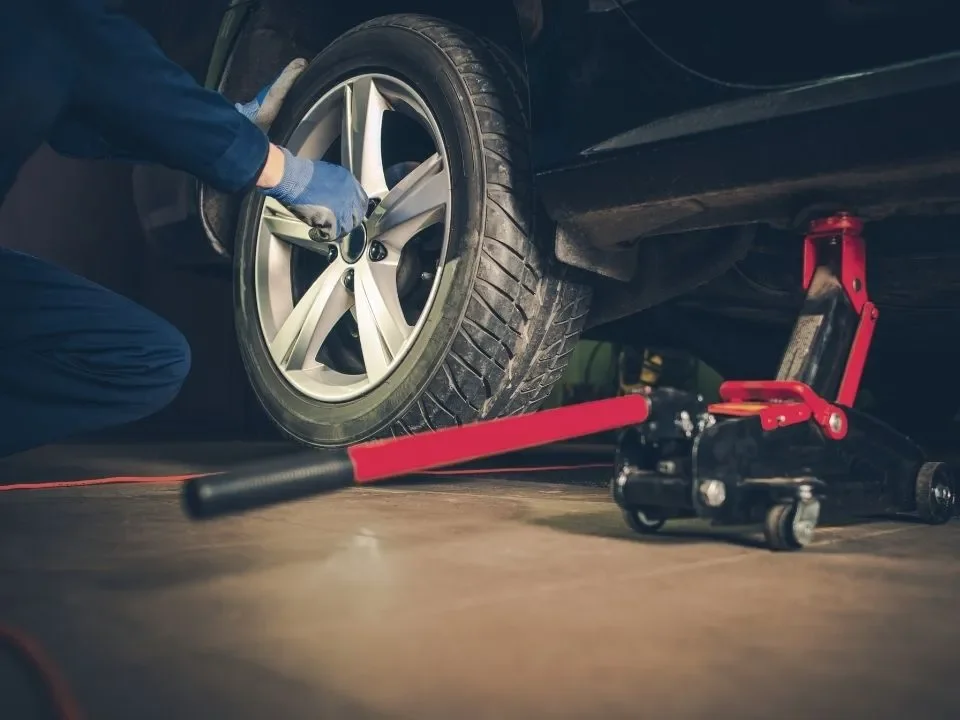
Car Jacks
Next on the tools list is a car jack. Forget everything we have discussed in this post thus far and realize this: tire rotation is not possible without raising your vehicle. A car jack is the tool required to raise your vehicle for tire rotation.
Most cars come with a small car jack, typically in the trunk of your car next to your spare tire, but these jacks are meant for small-scale, emergency car raises.
If you are someone who will raise their 4×4 vehicle frequently to rotate tires, it is highly recommended that you purchase a larger and higher quality jack for maximum safety and ability.
Additionally, investing in a jack stand is highly encouraged. Jack stands are meant to hold your vehicle in place after it has been raised. You would place a jack stand underneath your car after raising it with the car jack. The use of multiple stands will only enhance the stability of your vehicle when raising it.
Tire Selection
Okay, you now have your tools and the basic understanding of why tire rotation is important for your 4×4 vehicle. But what about the tires themselves? What options do you have when it comes to both tire rotation and tire replacement? There are two options to choose from: directional tires and non-directional tires.
Directional Tires
Directional tires are the most popular tires you will find in the car tire market. They are designed to specifically operate best when moving in a single direction. Hence their name, directional tires. If you look carefully, the tread patterns of the tire grooves aim forwards and downwards.
This tread pattern creates the shape of a V. In addition to the tread pattern, there should be markings along the side of the tire that point in the direction the tire should be facing when installed.
Non-Directional Tires
Non-directional tires are the opposite of directional tires, meaning they can operate in either direction (forwards and backwards). This can make them quite versatile and useful for your all-wheel drive car, as you will see shortly. Their flexibility lowers the likelihood of performance issues and damage to the tires.
Tire Rotation Pattern
Once you have decided upon which type of tires you wish to use for your vehicle, or at least discover which ones your vehicle currently uses, you now have to learn about tire rotation patterns for your upcoming tire rotation.
Tire rotation patterns are the ways in which you can rotate your tires to balance out their wear. That being said, the type of tires you use will require different patterns of rotation.

Directional Rotation Pattern
If you are using directional tires of the same size, the best pattern to use is the front-to-back pattern. This rotational pattern is very simple: when it comes time to rotate your tires, rotate them based upon which side of your vehicle they are on.
For example, swap your front right tire with your rear right tire, and your front left tire with your rear left tire.
Non-Directional Pattern
If you are using non-directional tires, there are a multitude of patterns to choose from – the first one being the forward cross pattern. With a forward cross pattern rotation, the front axles are moved directly to the rear, while the rear axles are moved to the front, but diagonally.
This tire rotation is seen the most in front-wheel-drive cars.
Up next, we have the rearward cross. In this rotational pattern, we see the complete opposite of the forward cross pattern. The rear wheel tires are moved directly forward, staying on the same side, while the front wheel tires are sent to the rear, but diagonally to their opposing side.
Then, we have the x pattern rotation. For this rotation, both the front wheel tires and the rear wheel tires are diagonally swapped to their opposing sides (front to rear and rear to front). Finally, we have the side-to-side pattern rotation.
This is a rare tire rotation reserved for vehicles with different-sized tires. The rotation is exactly as it sounds: the front wheel tires switch positions at the front of the car, and the rear tires switch positions at the car’s rear.
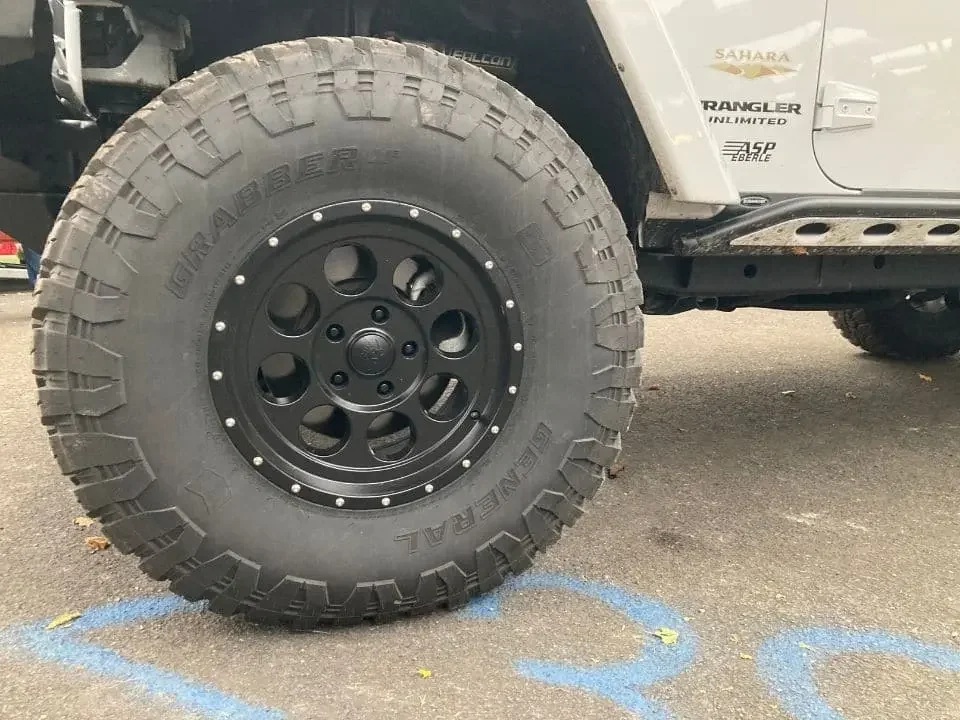
Preparing your Car for Tire Rotation
Once you have decided upon a tire rotation pattern for your all-wheel drive vehicle, it is time to prepare your car for tire rotation. Begin by ensuring that your vehicle is parked on level ground. An uneven parking surface may destabilize your car jack and jack stands while rotating tires.
In addition, ensure that your vehicle’s parking brake is engaged for maximum safety. A bonus safety tip is to mark your tires with a grease pencil to keep track of their location throughout your rotations.
Raising your Vehicle
It is now time to begin your tire rotation! Begin by gently loosening the lug nuts on all your wheels. This will make their removal a simpler process after having raised your vehicle. You do not want to be aggressively twisting away on a raised car.
Once the nuts have been loosened, it is time to raise your vehicle. Locate your vehicle’s ‘jack points’ (use the owner’s manual if need be) and place your car jack underneath. Your vehicle’s jack points are usually located in front of the rear wheels or behind the front wheels.
Tire Rotation
Once your jack is in place, begin raising your vehicle. You only need to raise it a few inches off the ground to begin removing your rear axle, or front axle, depending on where you begin. You will be working one wheel at a time.
Your next step is to fully remove your loosened lug nuts and take off your wheel. This is also an opportunity for you to inspect your axle and tire for any damage. Check out your tire’s tread depth and even inspect/adjust its air pressure, if needed.
When you replace one wheel with another, begin screwing lug nuts by hand to ensure that they have caught on properly. Then you may proceed with your wrench. Repeat this process with all your tires, lower your 4×4 vehicle, and you are complete! Make sure to conduct a tire rotation every 5000 km, for steady consistency.
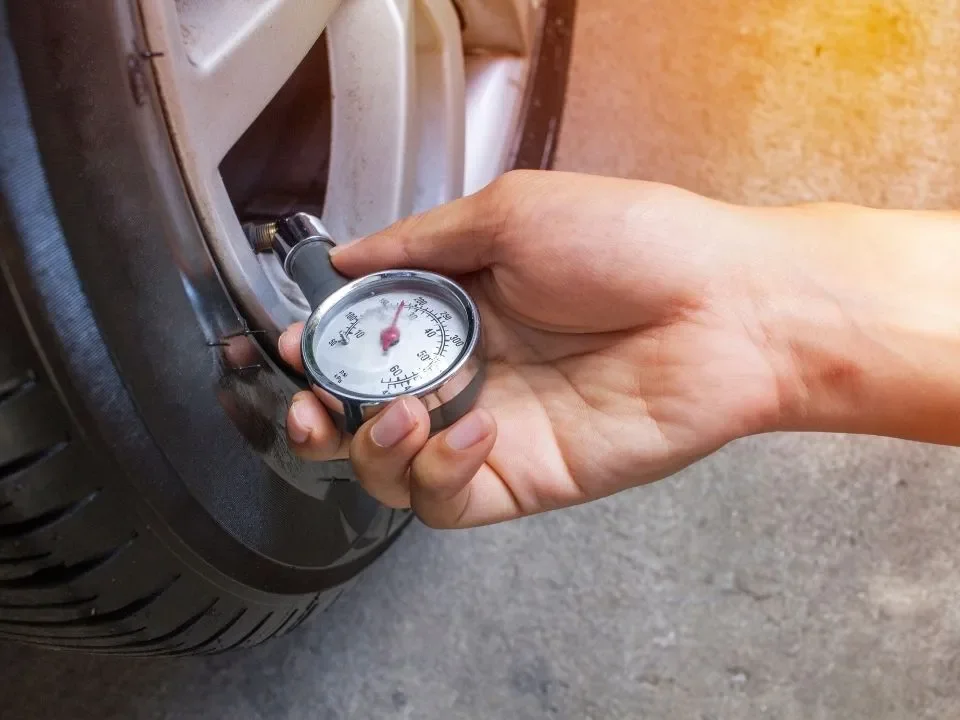
Final Thoughts
You have now completed a tire rotation for your four-wheel drive vehicle. This process may seem scary at first, but the more you do it, the quicker and easier things will be in the long run. Tire rotation is an excellent way to ensure that your 4×4 vehicle is able to confidently power its way through a multitude of terrains.
Well-balanced tires with even wear on each side will always grant you a smooth and safe ride. Please consult our FAQ section below, for a succinct summary of the important points we have covered in this article about how to rotate your tires on your 4×4 vehicle.
Try things on your own to learn and save money!
FAQ
Q: Is tire rotation the same for all cars?
A: No, tire rotation can vary depending on the type of car you have (front-wheel drive, rear-wheel drive, four/all wheel drive) and on the type of tires you use (directional or non-directional).
Q: What is the difference between the different car types?
A: Most cars are front-wheel drive (FWD) cars, meaning power is sent to the front wheels, which pull your car forward. Rear-wheel drive (RWD) cars send power to your rear wheels, which push your car forward.
Four or all-wheel drive (4WD or AWD) cars send power to all wheels for a balanced push and pull of your car forward.
Q: Why does your car type change your approach to its tire rotation?
A: The method in which your car is driven will affect the way in which your tires wear. A FWD car will have a greater impact on the front tires, a RWD car will have greater impact and wear on the rear tires, and an AWD/4WD car will evenly impact all tires.
Q: What tools do you need to rotate your tires?
A: To rotate your tires, you will need a wrench with the properly sized socket for your wheel lug nuts, as well as a strong car jack and car jack stands to raise, hold, and maintain your vehicle’s raised position as you remove and rotate your tires.
Q: What kind of tires can you choose from for your car?
A: You can choose from directional and non-directional tires. Directional tires are used for FWD cars, as their treads run in a single direction, whereas non-directional tires have treads that can be used in all directions, making them great for 4×4 vehicles.
Q: Can you use the same tire rotation pattern for all tire types?
A: No, different tire types require specific rotation patterns to complement their usage history. Directional tires typically follow a front-to-back pattern, whereas non-directional tires take on one of a forward cross, rearward cross, x, and/or side-to-side pattern.
Q: What are the important steps to take during your rotation?
A: Begin by locating your car’s jack points to raise it. Then, gently loosen all nuts before raising to smoothen the rotation process. After raising and removing your tires, double-check tread depth and air pressure before finally swapping tires.

